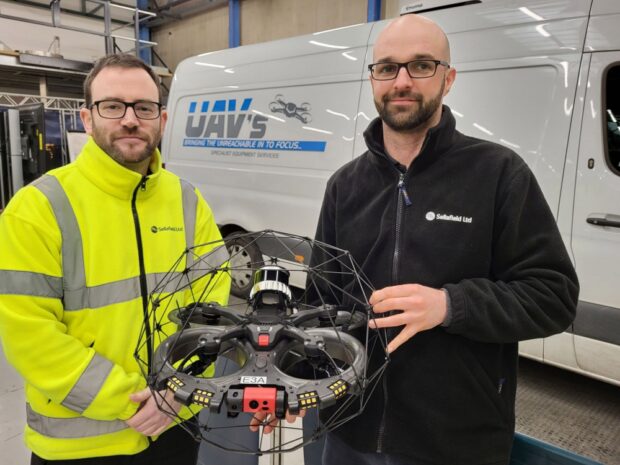“Sending a drone into this tight and unused space rather than an employee in the first instance reduces risk, and saves time and money,” said Amanda Smith, UAV equipment program lead. “The team put a lot of work into making sure they were fully prepared for this flight.”
According to Smith, drone pilots studied building plans to work out the best route for the drone to take.
“However, these plans are decades old and, as in this case, the pilot encountered obstacles we weren’t expecting,” she said. “The access into the area was also tighter than expected.”
Smith added that the pilots had just eight minutes of battery life to fly the drone into the area, map it with the equipment, and get out again.
Sam Jay, UAV equipment engineer and chief pilot, said,
“Now that we have scanned the area, the engineers can design scaffolding before they go to unblock a pipe which has been causing an issue in this particular area. By deploying the drone and speeding up the process we have potentially saved the company, and the taxpayer, hundreds of thousands of pounds.”
Characterization flight:
Following that first flight, the UAV team successfully flew the Elios 3 drone again, this time equipped with a radiation monitor to allow workers to assess radiation levels and identify potential hot spots in areas where radiation exposure levels are unknown.
The deployment of the dosimeter-equipped drone, said Sellafield, demonstrates the company’s commitment to exploring innovative solutions for radiation assessment, reducing risk to those working on the site.
“The first flight was a great success but there are many safety checks to go through before we can rely on the data we obtain,” said Tom Calverley, a radiometric physicist with the UAV team. “We must ensure that the readings are accurate and once we have confidence in the numbers from the dose readings it can help with planning jobs and other radiation monitoring applications.”
To build confidence in the readings, Calverley said that Sellafield and the UAV team will be testing the drone in a controlled environment by exposing it to varying dose profiles, which will provide a better understanding of the radiometric performance of the combined system.
“We must validate what manufacturers tell us, as employee safety is our number-one priority,” he said. “But this is undoubtedly a huge step forward and could make a massive difference to how we operate and keep our staff safe on site.”
Photo: L-R: Peter King, technical specialist and Sam Jay, UAV engineer and chief pilot, at Sellafield Ltd’s Engineering Centre of Excellence, with the Flyability Elios 3 drone
Sources: Press Release; Nuclear Newswire

